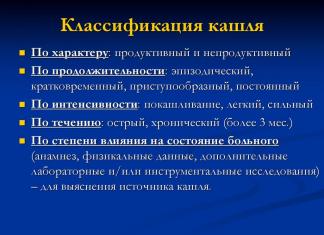Hi all!
In this article I will try to tell in simple language what is it equivalent series resistance (or ESR ) and where it comes from.
Equivalent Series Resistance or ESR (Equivalent series resistance, EPS) is a capacitor parameter that characterizes its active losses in the circuit AC. Simply put, this is resistance, which is determined by dielectric losses, the resistance of the plates, capacitor leads and intra-contact connections.
Dielectric losses constitute the bulk of losses in a capacitor and depend on the material, thickness and layer of the dielectric. These losses are due to the polarization features of the dielectric.
Polarization is a limited displacement of bound dielectric charges in an electric field.
Briefly, the polarization process can be represented as follows:
Under the influence of an electric field, charged dielectric particles perform involuntary mechanical vibrations, which are caused by their reorientation and displacement, i.e. polarization.
The charges in the dielectric layers close to the plates actively participate in the process of recharging the capacitor. In essence, this is a reduction in the thickness of the dielectric. The result of this is a significant increase capacitor capacity , but due to internal friction and inertia of the associated particles, heat is released and energy is lost in the conductive layers of the dielectric. With increasing frequency, dielectric losses increase proportionally and the phase shift angle between voltage and current will not be 90 o, as it should be in an ideal capacitor, but slightly less.
The same shift in the circuit occurs when a resistor is connected in series with the capacitor. For this reason, the concept of equivalent series resistance (or ESR) is adopted for calculations, in which dielectric losses are summed with the resistance of the plates, connections and leads. Essentially, it is a resistor connected in series with a capacitor.
The weakest point in any radio circuit is the electrolytic capacitors, which are subject to constant drying out. And the greater the currents pass through them, the faster this process. It is impossible to determine a bad capacitor with a regular ohmmeter, so you need a special device - an esr meter.Electrical circuit for esr capacitor meter
Printed circuit boards - drawing


In a typical circuit, there may be 10 or even 100 capacitors. Desoldering each one for testing is very tedious and there is a high risk of damaging the board. This tester uses low voltage (250 mV) high frequency (150 kHz) and is capable of measuring the ESR of capacitors directly in the circuit. The voltage is chosen low enough so that other surrounding radio elements of the circuit do not affect the measurement results. And if you accidentally happen to test a charged capacitor, it doesn’t matter. This meter can withstand up to 400V charge on the capacitor. Experience has shown that the ESR meter identifies about 95% of capacitors with potential problems.
Features of the device
- Test electrolytic capacitors> 1 µF.
- Polarity is not important for testing.
- Transfers capacitor charge up to 400V.
- Low current consumption from the battery - about 25 mA.
- Easy to read analog meter data.
- Measures ESR in the range from 0-75 Ohms on an extended scale using an ohmmeter.
How to use an ESR meter

Turn on the device. Make sure that the circuit being tested is not energized. Discharge the capacitor before testing - the ESR meter does not do this automatically. Short-circuit the terminals of the capacitor and hold them there for a few seconds. Use a voltmeter to make sure the capacitor is completely discharged. The voltmeter should show zero reading. Touch the ESR meter probes to the capacitor. Determine ESR resistance. We find out whether the ESR value is acceptable by comparing the measured ESR with the reference data. View this table
This project was conceived as a way to test the functionality of a capacitor. I buy a lot of old radios electronic devices older than 25-60 years and the condition of electrolytic capacitors can be suspicious. I needed quick way checking capacitors.
What is ESR?
"ESR" stands for equivalent series resistance. ESR is one of the characteristics that determine the performance of an electrolytic capacitor. The lower the ESR of a capacitor, the better, because with a high ESR, the capacitor will heat up when current passes through it, and this will destroy it. Over time, the ESR of the capacitor can increase from 10 to 30 times, or the capacitor will stop passing current altogether. The typical lifespan of electrolytic capacitors is 2000-15000 hours and is highly dependent on temperature environment. When the ESR increases, the capacitor begins to perform less well and eventually the circuit fails.
WhyESRIs the meter that useful?
Most ESR meters require that the capacitor be removed from the circuit. When there are many capacitors in a circuit, it is very tedious and there is a risk of damaging the board. This tester uses low voltage (250mV) high frequency (150kHz) to measure capacitors. Measurement without desoldering from the circuit is possible due to the low voltage that is enough for the capacitor, but it is not enough for other parts, so they do not interfere with the measurement. Most ESR meters will be damaged if you use them to measure a charged capacitor. This circuit can withstand up to 400V charge on the capacitor ( This tension is life-threatening. Be careful!). My experience has shown that the ESR meter recognizes about 95% of bad capacitors.
Characteristics of the ESR meter:
- measurement of electrolytic capacitors with a capacity > 1 µF
- the polarity of the capacitor is not important
- allows the connection of charged capacitors up to 400V
- low power consumption (about 25 mA), which gives about 20 hours battery life when using 4 AA batteries
- ESR measurement in the range of 0-75 Ohm.
Description of the circuit
The circuit starts with a 150 kHz oscillator on a single 74hc14 element. The remaining elements are used to increase the voltage going to the low-pass filter. A low pass filter is necessary because the square wave signal contains a lot of noise and harmonics. The signal from the filter goes to a 10 Ohm resistor, which provides a low signal level when measuring a capacitor. Diodes D5 and D6 protect the circuit from discharge when a charged capacitor is connected. R18 is the quenching resistor for C5. C5 protects the circuit from DC voltage up to 400V.
The rest of the circuit is a transistor amplifier with a gain of about 10.5. This amplifies the signal coming from the capacitor to several volts in amplitude. The amplified voltage must be large enough to overcome the 2 diodes before the scale begins to respond. The correct functioning of the circuit can be checked by connecting resistors of different resistances to the input (1 Ohm - about 90% of full scale, 10 Ohms - about 40% of scale and 47 Ohms - about 10% of scale). Tester readings may vary slightly depending on temperature. Below you can download photos and a drawing of the PP.
Project files:
Assembly drawing - esrbuildit.png
PP bottom view - esrpcb.png
PP bottom view - esrxray.png
PP and diagram in format - ESR meter.zip
/SWCadiii - esr.asc
List of radioelements
| Designation | Type | Denomination | Quantity | Note | Shop | My notepad |
|---|---|---|---|---|---|---|
| IC1 | Buffer IC, driver | CD74HC14 | 1 | To notepad | ||
| Q1 | Bipolar transistor | 2N2222 | 1 | To notepad | ||
| D1-D4 | Rectifier diode | 1N4148 | 4 | To notepad | ||
| D5, D6 | Rectifier diode | 1N4004 | 2 | To notepad | ||
| C1-C3 | Capacitor | 0.01 µF | 3 | To notepad | ||
| C4 | Capacitor | 0.047 µF | 1 | To notepad | ||
| C5 | Capacitor | 0.47 µF 400 V | 1 | To notepad | ||
| C6 | Capacitor | 0.1 µF | 1 | To notepad | ||
| C7 | Electrolytic capacitor | 10 µF | 1 | To notepad | ||
| R1 | Resistor | 1 kOhm | 1 | To notepad | ||
| R2-R6 | Resistor | 680 Ohm | 5 | To notepad | ||
| R7, R8 | Resistor | 10 ohm | 2 | To notepad | ||
| R9 | Resistor | 100 kOhm | 1 | To notepad | ||
| R10 | Trimmer resistor | 25 kOhm | 1 | To notepad | ||
| R11 | Resistor | 2.2 kOhm | 1 | To notepad | ||
| R12 | Resistor | 100 Ohm | 1 | To notepad | ||
| R17 | Resistor |
DIY ESR meter. There is a wide list of equipment breakdowns, the cause of which is precisely electrolytic. The main factor in the malfunction of electrolytic capacitors is “drying out,” familiar to all radio amateurs, which occurs due to poor sealing of the housing. In this case, its capacitive or, in other words, reactance increases as a result of a decrease in its nominal capacity.
In addition, during operation, electrochemical reactions take place in it, which corrode the connection points between the leads and the plates. The contact deteriorates, eventually forming “contact resistance”, sometimes reaching several tens of ohms. This is exactly the same if a resistor is connected in series to a working capacitor, and moreover, this resistor is placed inside it. This resistance is also called “equivalent series resistance” or ESR.
The existence of series resistance negatively affects the operation of electronic devices by distorting the operation of capacitors in the circuit. Increased ESR (about 3...5 Ohms) has an extremely strong impact on the performance, leading to the burning of expensive microcircuits and transistors.
The table below shows the average ESR values (in milliohms) for new capacitors of various capacities depending on the voltage for which they are designed.
It is no secret that reactance decreases with increasing frequency. For example, at a frequency of 100 kHz and a capacitance of 10 μF, the capacitive component will be no more than 0.2 Ohm. When measuring the drop in alternating voltage having a frequency of 100 kHz and higher, we can assume that with an error in the region of 10...20%, the result of the measurement will be the active resistance of the capacitor. Therefore, it is not at all difficult to assemble.
Description of ESR meter for capacitors
The pulse generator with a frequency of 120 kHz is assembled using logic elements DD1.1 and DD1.2. The generator frequency is determined by the RC circuit on elements R1 and C1.

For coordination, element DD1.3 was introduced. To increase the power of pulses from the generator, elements DD1.4…DD1.6 were introduced into the circuit. Next, the signal passes through the voltage divider across resistors R2 and R3 and goes to the capacitor Cx under study. The alternating voltage measurement unit contains diodes VD1 and VD2 and a multimeter as a voltage meter, for example, M838. The multimeter must be switched to DC voltage measurement mode. The ESR meter is adjusted by changing the R2 value.
The DD1 - K561LN2 microcircuit can be replaced with K1561LN2. Diodes VD1 and VD2 are germanium, it is possible to use D9, GD507, D18.
The radio components of the ESR meter are located on, which you can make yourself. Structurally, the device is made in the same housing with the battery. Probe X1 is made in the form of an awl and attached to the body of the device, probe X2 is a wire no more than 10 cm in length with a needle at the end. Capacitors can be checked directly on the board; there is no need to unsolder them, which makes it much easier to find a faulty capacitor during repairs.
Device setup
1, 5, 10, 15, 25, 30, 40, 60, 70 and 80 ohms.
It is necessary to connect a 1 Ohm resistor to the probes X1 and X2 and rotate R2 until the multimeter reads 1 mV. Then, instead of 1 Ohm, connect the next resistor (5 Ohms) and, without changing R2, record the multimeter reading. Do the same with the remaining resistances. The result is a table of values from which the reactance can be determined.
What is the main parameter for assessing the health of capacitors? Of course their capacity. But as pulsed high-voltage technology spreads, it became obvious that it is necessary to pay attention to one more parameter on which the reliability and quality of operation of pulse converters depends - this is the equivalent series resistance (ESR, in English. ESR - equivalent series resistance). The use of capacitors with an increased ESR value leads to an increase in output voltage pulsations compared to the calculated values, and rapid failure due to increased heating due to heat release on the ESR; there are even cases of boiling of the electrolyte, deformation of the case, and explosions of capacitors. The particular severity of the negative impact of ESR in power pulse converters is caused by operation at high charge-discharge currents, as well as the fact that ESR increases with increasing operating frequency. The presence of ESR is explained by the design of the oxide capacitor and is due to the resistance of the plates, the resistance of the leads, the contact resistance of the contacts between the plates and leads, as well as losses in the dielectric material. Over time, the ESR of a capacitor increases, which is not good at all.ESR of different types of capacitors
Naturally, it is impossible to check the equivalent series resistance of a capacitor with a conventional Ohmmeter - a special device is needed here. There are several on the Internet simple designs ESR meters, but if desired, you can assemble a more accurate and convenient meter on a microcontroller. For example, from the Radio 7-2010 magazine.

Circuit of the ESR meter for capacitors on
Attiny2313
All necessary files and firmware are in the archive. After assembly and switching on, turn the contrast control until a two-line inscription appears on the LCD screen. If it is not there, we check the installation and correctness of the ATtiny2313 MK firmware. If everything is OK, press the "Calibration" button - a correction will be made to the firmware for the response speed of the input part of the meter. Next you will need several new electrolytic capacitors high quality with a capacity of 220...470 uF of different batches, best of all - for different voltages. We connect any of them to the input sockets of the device and begin to select resistor R2 within 100...470 ohms (I got 300 ohms; you can temporarily use a constant + trimming chain) so that the capacitance value on the LCD screen is approximately similar to the capacitor value . There is no need to strive for great accuracy yet - there will still be adjustments; then check with other capacitors.

To configure the ESR meter, you need a table with typical values of this parameter for different capacitors. It is recommended to stick this label on the body of the device under the display.

The following label shows the maximum equivalent series resistance values for electrolytic capacitors. If the measured capacitor has a higher value, then it can no longer be used to operate in a rectifier smoothing filter:

We connect a 220 uF capacitor and, by slightly selecting the resistance of resistors R6, R9, R10 (indicated with asterisks in the diagram and in my assembly drawing), we achieve Esr readings close to those indicated in the table. We check on all available prepared reference capacitors, incl. You can already use capacitors from 1 to 100 μF.

Since the same section of the circuit is used to measure the capacitance of capacitors from 150 μF and the ESR meter, after selecting the resistance of these resistors, the accuracy of the capacitance meter readings will change somewhat. Now you can further adjust the resistance of resistor R2 to make these readings more accurate. In other words, you need to select the resistance R2 - clarify the readings of the capacitance meter, adjusting the resistors in the comparator divider - clarify the readings of the ESR meter. Moreover, priority should be given to the internal resistance meter.

Now you need to set up a capacitance meter for capacitors in the range 0.1...150 µF. Since a separate current source is provided in the circuit for this, measuring the capacitance of such capacitors can be made very accurate. We connect small capacitors to the input sockets of the device and, by selecting resistance R1 within the range of 3.3...6.8 kOhm, we achieve the most accurate readings. This can be achieved if not electrolytic, but high-precision capacitors K71-1 with a capacity of 0.15 μF with a guaranteed deviation of 0.5 or 1% are used as reference ones.

When I assembled this ESR meter, the circuit started up immediately, only calibration was needed. This meter has helped many times in repairing power supplies, so the device is recommended for assembly. The scheme was developed by - DesAlex , assembled and tested: sterc .
Discuss the article ESR METER ON A MICROCONTROLLER



























